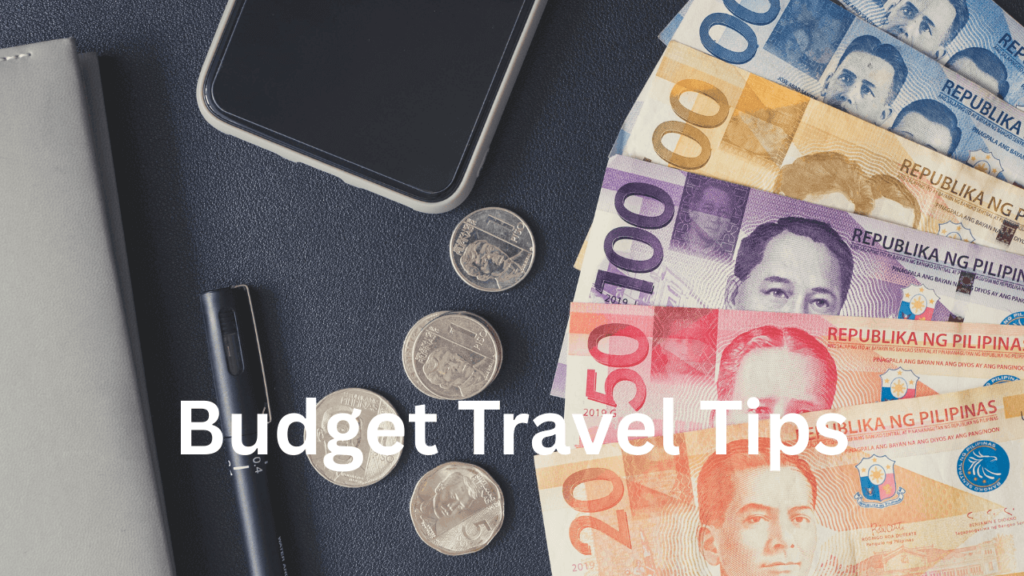Travel has long been associated with freedom, discovery, and personal growth. Yet, in today’s world of rising costs—from airfare to accommodation—many people feel priced out of the adventure. According to a 2024 Skyscanner survey, nearly 70% of travelers said cost was the biggest factor determining whether they could travel or not. That’s why budget travel tips are more relevant than ever: they make travel more accessible, sustainable, and enjoyable.
From my own experience traveling through Europe on a shoestring, I’ve learned that traveling on a budget doesn’t mean giving up comfort or adventure. Instead, it’s about making smart choices, leveraging resources, and prioritizing experiences over unnecessary expenses. With research-backed strategies and practical hacks, you can stretch your budget further and still have unforgettable journeys.
This article will share the best budget travel tips, combining personal insights, expert advice, and data-driven strategies.
Why Budget Travel Doesn’t Mean Cheap Travel
Before diving into the tips, it’s important to reframe what budget travel means. Traveling on a budget isn’t about penny-pinching every step of the way—it’s about value optimization. For example, instead of staying at a pricey downtown hotel, you might book a clean, well-reviewed guesthouse for half the cost and use the savings on local food experiences.
A 2023 report from Booking.com found that 77% of travelers value “authentic local experiences” over luxury amenities. Budget travel often puts you closer to those authentic experiences, whether that’s eating street food in Bangkok, staying in a family-run B&B in Ireland, or taking a scenic train ride in Eastern Europe instead of a short-haul flight.
Planning Ahead: The Foundation of Budget Travel
1. Book Early, But Stay Flexible
Flights and accommodations usually make up the biggest chunk of your travel budget. Research shows that booking flights 1–3 months in advance for domestic travel and 3–6 months for international trips tends to yield the best deals.
Tools like Google Flights, Skyscanner, and Hopper can help you track and predict price trends. Personally, I saved €120 on a Dublin-to-Rome flight simply by setting an alert and booking when the price dipped.
However, flexibility is just as important. Being open to traveling mid-week, flying into secondary airports, or even shifting your trip by a few days can cut costs significantly.
2. Use Budget Airlines—But Read the Fine Print
Carriers like Ryanair, EasyJet, and AirAsia make air travel affordable, but baggage fees, seat selection, and boarding passes can quickly add up. Always double-check the airline’s baggage policy, and consider packing light to avoid extra fees.
Smart Accommodation Choices
3. Hostels Aren’t Just for Backpackers
Modern hostels have evolved into stylish, social, and affordable stays. Many offer private rooms alongside dormitories, making them a great choice for budget-conscious travelers of all ages.
For example, on a trip to Lisbon, I stayed at a hostel with free breakfast, nightly cultural events, and walking tours—all included for €20 a night.
4. Explore Alternatives: Guesthouses, Couchsurfing, and House-Sitting
- Guesthouses and B&Bs often provide more local flavor at lower prices than hotels.
- Couchsurfing connects you with locals willing to host for free, though it’s more about cultural exchange than saving money.
- House-sitting platforms like TrustedHousesitters let you stay in homes for free in exchange for pet or property care—a fantastic long-term budget option.
5. Leverage Loyalty Programs and Points
Even budget travelers can benefit from travel reward credit cards. Accumulated points can be redeemed for free flights or hotel stays. According to NerdWallet, travelers save an average of $750 per year by strategically using reward programs.
Eating on a Budget Without Sacrificing Flavor
6. Cook When You Can
If your accommodation has a kitchen, cooking a few meals saves a surprising amount. On a month-long trip through Italy, cooking just two meals a day saved me nearly €300. Shopping at local markets also immerses you in the culture.
7. Street Food Is Your Friend
In countries like Thailand, Mexico, or Vietnam, street food is not only cheap but also delicious and authentic. A study by the Food and Agriculture Organization (FAO) highlights that street food often forms the backbone of local culture and provides a safe, affordable option.
8. Eat Where the Locals Eat
Avoid restaurants in touristy hotspots. Walk a few blocks away, and prices often drop significantly. Apps like Tripadvisor or HappyCow can help find affordable, authentic options.
Transportation Hacks
9. Use Public Transport
Taxis and rideshares can drain your budget quickly. Instead, rely on buses, trams, or metro systems. In Dublin, a single bus ride costs €2, while a taxi across the same distance might cost €15.
10. Consider Rail Passes or Discount Cards
Europe, Japan, and other regions offer rail passes that can save frequent travelers hundreds. For example, the Eurail Pass offers flexibility and significant savings for long-term travelers hopping between cities.
11. Walk or Bike Whenever Possible
Not only is it free (or nearly free), but it’s also the best way to discover hidden gems. On one trip to Amsterdam, I discovered a local flea market while biking—a spot I never would have found by train.
Budget-Friendly Activities
12. Free Walking Tours
Many cities offer “pay what you can” walking tours. They’re informative, fun, and let you pay based on your budget. I joined one in Prague and walked away with insider tips that saved me money for the rest of the trip.
13. Museums and Attractions: Look for Free Days
Many museums worldwide have free or reduced-price entry days. For example, the Louvre in Paris is free on the first Saturday of every month.
14. Embrace Nature
Hiking, picnicking, and exploring natural landscapes are often free and unforgettable experiences. Ireland’s Wild Atlantic Way, for instance, is one of the most scenic drives in the world—and it doesn’t cost a thing to enjoy the views.
Technology and Budget Travel
15. Use Budget Apps
- Rome2Rio: Find the cheapest transport between cities.
- Splitwise: Great for splitting costs when traveling in groups.
- XE Currency: Avoid overpaying with poor exchange rates.
16. Download Offline Maps
Google Maps and Maps.me let you download maps for offline use, which helps you avoid expensive roaming charges.
Safety and Budget Travel
Some people equate budget travel with unsafe choices, but that’s not the case. Smart planning keeps you both safe and frugal.
- Always read reviews of accommodations before booking.
- Avoid too-good-to-be-true deals that may compromise safety.
- Keep digital copies of important documents.
Common Mistakes to Avoid
- Overpacking: Leads to airline baggage fees. Stick to carry-on when possible.
- Ignoring Local SIM Cards: International roaming fees can quickly add up.
- Not Setting a Daily Budget: Overspending in the first few days leaves you stressed later.
Personal Lessons Learned from Budget Travel
On my first long trip through Southeast Asia, I made nearly every rookie mistake: overpacking, relying on taxis, and eating in tourist restaurants. By the end of the month, I had spent double my planned budget.
On my second trip, I changed my strategy: I booked hostels with free breakfast, used night buses to save on accommodation, and ate where locals ate. The result? I stretched the same budget across two full months instead of one.
Budget travel taught me that comfort is not always about luxury—sometimes it’s about freedom and flexibility.
Frequently Asked Questions (FAQs)
Q: Can budget travel still be comfortable?
Yes. Comfort comes from planning and prioritizing. You might trade a luxury hotel for a clean hostel but use the savings for memorable experiences.
Q: Is budget travel only for young backpackers?
Not at all. Families, couples, and retirees can all benefit from budget strategies. It’s about smart choices, not age.
Q: What’s the safest way to find cheap accommodation?
Use reputable platforms like Booking.com, Hostelworld, or Airbnb, and always read reviews carefully.
Q: How much should I budget per day?
It depends on the destination. Southeast Asia might cost $25–$40 a day, while Western Europe could range from $60–$120.
Conclusion: The Joy of Traveling Smart
Budget travel is more than a way to save money—it’s a mindset that prioritizes authentic experiences, cultural immersion, and freedom over luxury and excess. By planning ahead, making smart choices, and using the tips outlined in this article, you can stretch your budget further while enriching your travel experience.
Personally, my best memories—from sharing a meal with a local family in rural Spain to hiking free trails in Ireland—didn’t cost much. They came from being open, flexible, and resourceful.
So, if rising costs have you doubting your travel plans, remember: budget travel is not about limiting yourself; it’s about expanding what’s possible.
Have more questions about saving money while traveling? Drop them below—I’d be happy to share more insights!

Hi, I’m Tanvir, the founder and author of Explore Ireland Now. With a deep love for Ireland and its rich culture, history, and landscapes, I created this site to share everything that makes this beautiful country worth exploring. Whether you’re a local looking for hidden gems or a traveler planning your next adventure, I provide insightful guides, tips, and recommendations to help you experience Ireland to the fullest.
From stunning landscapes to vibrant cities and quaint villages, Ireland is full of wonders waiting to be discovered. Through my personal experiences and research, I aim to bring you the most up-to-date information and inspiration for your journey.
Thank you for visiting Explore Ireland Now—I hope my content helps you uncover all that this incredible country has to offer! If you have any questions or need travel advice, feel free to reach out.



